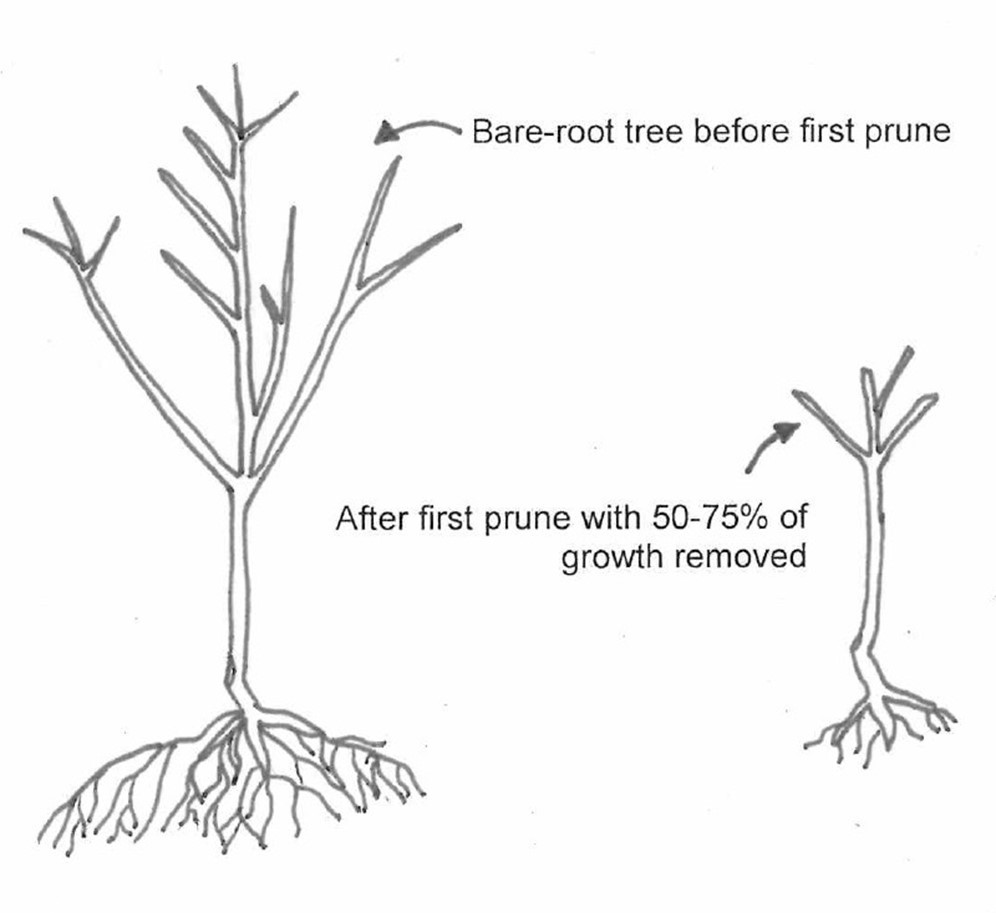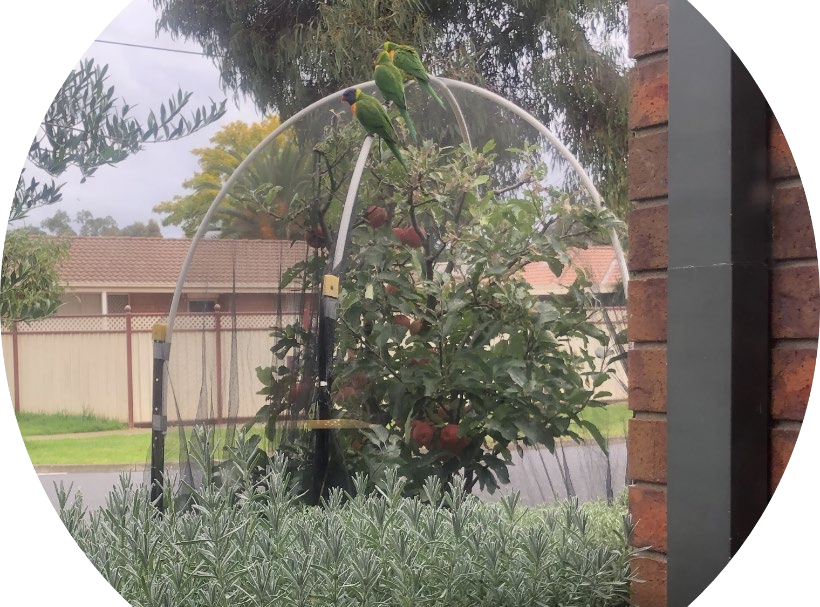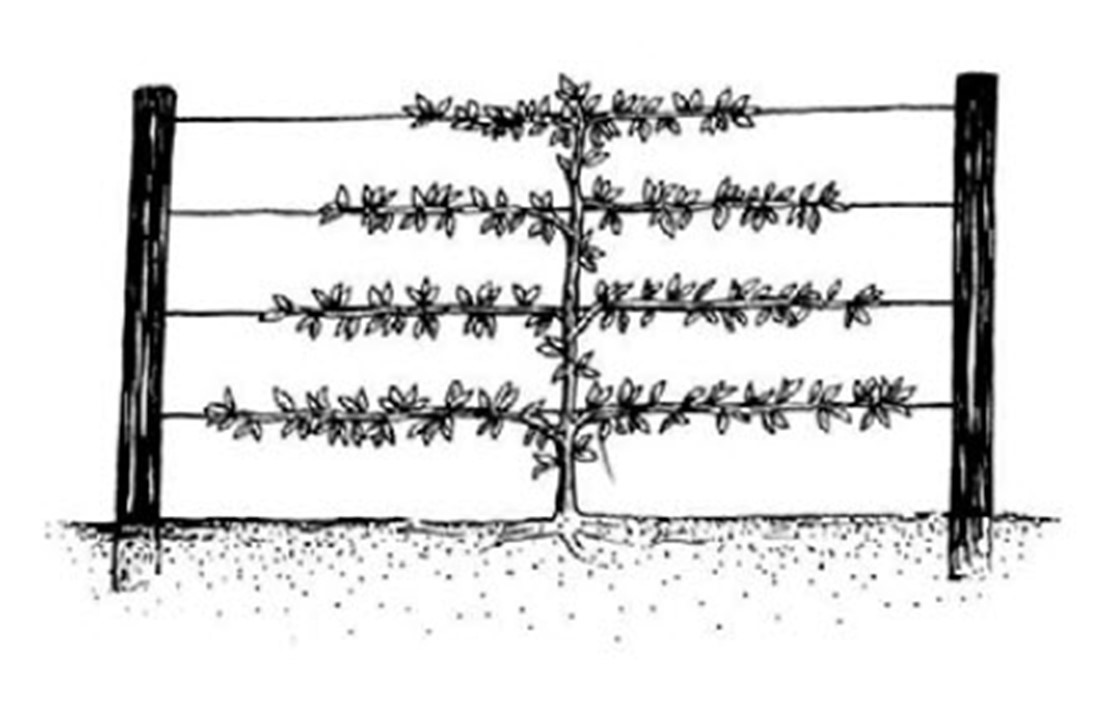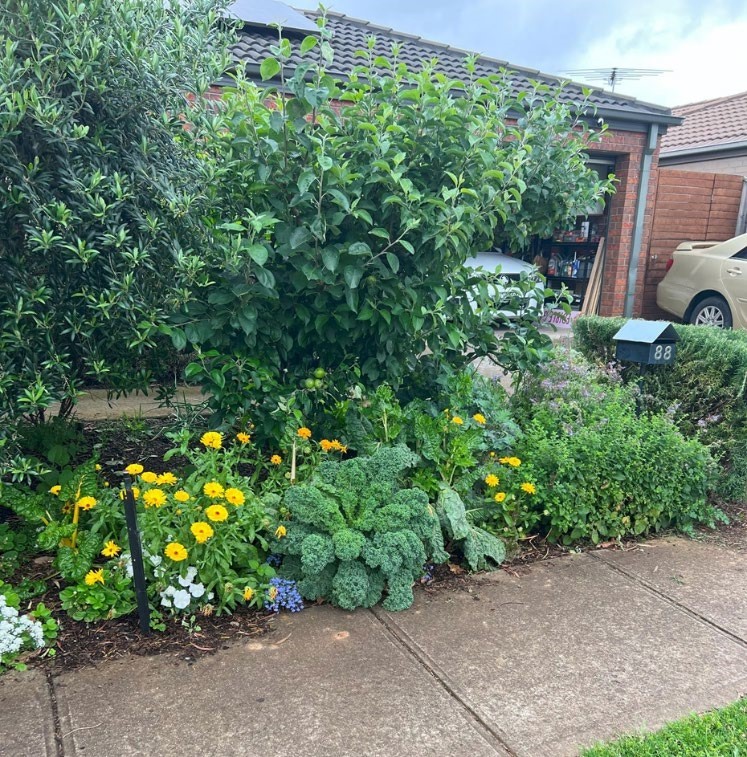Winter Pruning
Notes prepared by Craig Castree, 2025

Keeping equipment clean, sharp, and sterilized with 80% methylated spirits and 20% water. This heals cuts made quickly and limits fungal and rotting issues.
Prune correctly using this cut parallel to the bud not more than 5mm from the bud.

Winter pruning encourages vigor on trees, Summer/Autumn pruning discourages vigor on trees. It is trees younger than 3 years old that need winter pruning for the first two years. A new tree needs 70% pruned off for an open vase or wine glass shaped tree.
Open vase shaped trees should have only 4 main framework branches, remember the points of the compass N,S,E,W. In their first year they should be pruned to hip height, and in their second year they should be pruned at chest height and that is the last winter prune they should get.
In the tree’s first summer, about 4-6 weeks after the fruit has finished being picked, the tree should be pruned to about 2 metres tall. To tell when the tree is ready for that prune, test the tip of the summer growth to see how soft it is, once it has turned semi-hardwood, it is ready to be pruned.

On pome fruit trees (apples, Pears, Nashi, Quince) at any stage of the year, an undercut method can be used to encourage fruit spurs indicated by the red circle pictured. This causes dieback and turns on an enzyme in the tree that sets flowering buds.
Counting a water shoot (tall, long slender upright branch) count 5 buds from where it started and cut beneath the fifth bud. This is what causes the dieback and in the winter months when cutting of the 3 D’s (Dead, Diseased, Damages) branches, prune off the black tip caused by this method.

No nets equal no fruit. Ensure your trees are kept at a manageable height, this makes netting, pruning, thinning, picking easy!
Queensland fruit fly is now prevalent in Victoria so it won’t be just birds and possums you will need to keep from your fruit. Fruit fly needs careful management to limit its damage. Insect netting will need to be used in place of bird netting in fruit fly affected areas. A guide as to when nets are best applied to ensure pollination has taken place, put bird nets on your trees at start of December and have them completed by Christmas eve.
Get to know what your fruiting buds look like before you prune, this way you are less likely to prune off fruit wood from your trees. As a rule, it is the multiple buds that are the fruit bearing flowering buds, singular buds a merely leaves or branches to be.

Espaliers suit most urban gardens far better than open vase or wine glass shaped trees due to the ever-decreasing size of gardens these days. Espaliers are two dimensional trees trained parallel to a structure, fence or building and use space well. Due to the lateral growth produced by espaliers they generally out yield other shaped fruit trees. You also get to use the soil below a little easier than other trees. Frames about 3m in diameter, about top of fence height 1.8 – 2.0 metres tall is a perfect size for most espaliers.
Growing them away from the fence at least 60cm allows you to use the top of the fence to fasten nets too saving time and expense on having to erect something to do that with.

Tree guilds: this is when you mimic nature and underplant your trees with understory plants, herbs, edibles and flowers to attract in beneficial insects to the tree. This also goes to adding a diversity of roots systems and colonies of microbes that will benefit the tree and the other plants within the guild.
Olives and fig trees should always be pruned in winter to a manageable height reducing the vertical growth will cause lower lateral branching that will increase yields.
Citrus trees should be pruned in Melbourne and cool climate areas in March April; this is when the citrus leaf miner is most active and looking for new supple growth to lay eggs in. Pruning then only leaves older foliage that will not interest the insect, and it will move on.
If you want to learn much more about growing fruit trees, come to Werribee Park Heritage Orchard.
Our volunteers’ days are each Friday and the 1st Sunday of each month until July. Our winter fruit tree festival for 2025 is on August 10.


